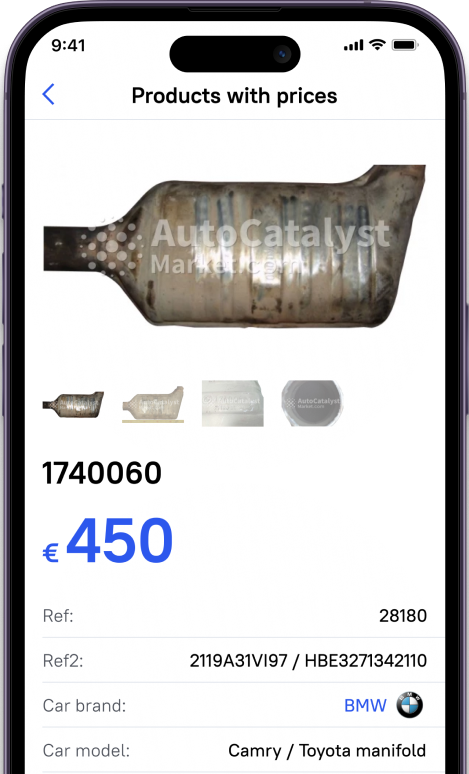- What are the EPA Regulations on Catalytic Converters?
- EU Standards for Catalytic Converters
- The Impact of Catalytic Converter Regulations on the Automotive Industry
What are the EPA Regulations on Catalytic Converters?
The EPA Regulations in the United States sets standards and regulate emissions through the installation of catalytic converters in vehicles. With the help of catalysts and their recycling, the world becomes many times cleaner due to the filtering of many harmful components that are created as a result of engine fuel processing. It is the EPA that sets the framework by which both the production and operation of catalysts in cars are regulated. With the help of all these regulations and information, cars in the USA emit the smallest possible amount of harmful exhaust.
Before buying or installing any catalyst, you need to make sure that this particular device has passed all the tests and that it meets all the technical requirements set by the EPA. During the manufacturing process in the US, the factory must develop catalysts that will effectively filter exhaust gasses according to the EPA guidelines and regulations. Those include many parameters that were set by the EPA back on August 5, 1986. It is simply impossible to list them all here, but let’s focus on the most important ones.
The most essential thing is the labels on the converter. Such labels give all the necessary information about the device. Each one either start with the letter N or U. N stands for the new cat, and U is for the used one. Sometimes, they might have different letters, such as CA (California state). This happens due to different regulations in the state of California. The labels include other valuable information, such as manufacturer’s code, numerical designation of the vehicle application or part number, month and year of manufacture. The list goes on and on, as this is only an example.
EPA is very strict in terms of the technical side of the catalyst manufacture. The device do not have to differ in various terms, such as material content, its ratio, density, shape, and others.
EPA’s guidelines include a lot of helpful information for catalytic converter owners as well. They have everything a person needs to know about legally using, installing, or replacing the catalytic converter. Do not hesitate to check them out, as they are open to the public and include many aspects when dealing with such a complicated matter.
EU Standards for Catalytic Converters
As in other parts of the world, the EU also has its own standards and regulations according to which catalysts are made. In Europe, several standards set their own rules for the making of catalysts, but they are all aimed at making them as efficient as possible and safer for the environment. Automotive manufacturers must, as in the United States, confirm the quality and efficiency of the exhaust reduction of their catalysts with various tests. If the catalysts pass all the tests, then they are installed in cars and serve for many years to come.
Catalysts in older generations of cars, according to the rules and standards, must also be serviced and changed if necessary so as not to create any possible issues.
On the European market, when buying a catalyst, you need to find out whether this part passed all the tests successfully and whether it can process exhaust efficiently. However, you do not have to research everything yourself. According to EU regulations and standards, manufacturers need to apply for approval. And this process is not simple at all. The device has to be done based on various essential aspects, such as material, type of catalytic activity, dimensions and shape, thermal protection, material content and ratio, and many more. Thus, if the application was successful, the catalytic converter can be installed on the specific model of the vehicle. According to European standards all gasoline and diesel vehicles must emit a minimum amount of exhaust emissions and be constantly tested.
Every year, as catalysts are improved, the rules by which catalysts are checked and tested are becoming more strict. This process has become an essential part of the environmental security and overall safety during operating with the catalysts.
The Impact of Catalytic Converter Regulations on the Automotive Industry
Summarizing all of the above, we can say that without authorities and regulations, it is impossible to imagine the world and modern cars as they are right now. In any region in which catalysts and cars are manufactured, authorities closely monitor the process. With the help of all types of tests, the catalysts try to reach the perfection. It is necessary in order to secure not only the planet but the drivers and vehicles as well.
Aside from the environmental issues, catalytic converters that did not pass the necessary regulations can cause damage to engines. Sometimes, they can even break down completely. Which can cause not only the cost for repairs and a lot of time spend while dealing with this issue, but also can harm the vehicle and sometimes the driver himself.
Assessing the whole situation surrounding regulations in general, we can conclude that all the tests and checks are only beneficial both for the manufacturers of catalysts and for buyers who want to get their hands on the most high-quality devices.
Make sure to check the regulations for your own specific region/country and ensure that your catalytic converter is operating within them.








































